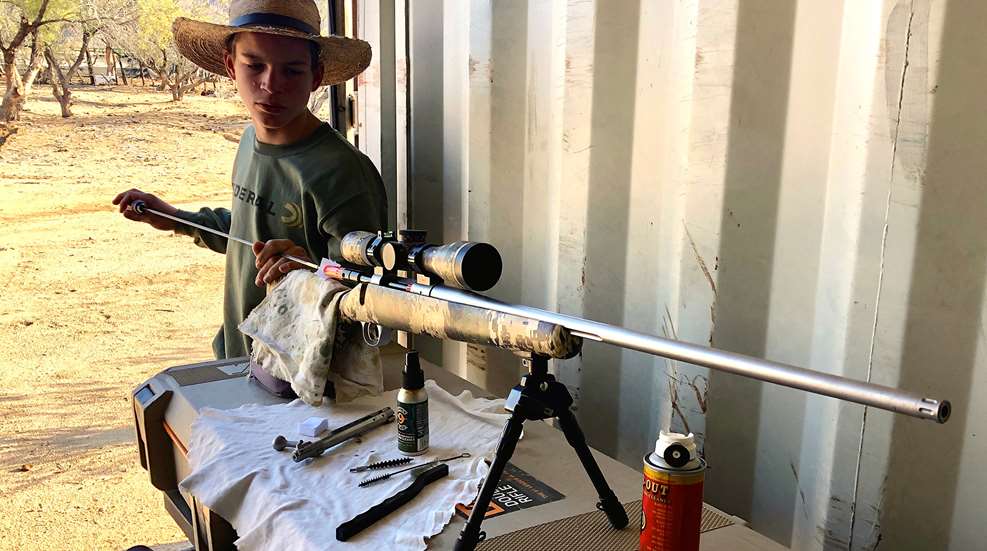
Hunting season is over; meat is in the freezer and antlers on the wall. You’ve got a few photos to help you remember those glorious fall days when the leaves were falling and the deer or elk were rutting. All that’s left to do is clean and store your gear so it will be ready and waiting the next time hunting season rolls around and you hear the call of the wild.
The most important tool in your hunting kit is your rifle. It’s what ultimately closes the deal on your hunt, putting that meat in the freezer and those antlers in your den or living room. You should give your rifle the best care possible. Too many hunters don’t know how to properly clean their rifle, and just put it away dirty at the end of the season. Moisture is attracted to fouling in the bore and action, causing corrosion and rust to eat away at the metal surfaces. Those surfaces will become pitted and rough, destroying accuracy and ultimately ruining your hunting weapon. Don’t be one of those hunters.
Cleaning your rifle right is a step-by-step process that, depending upon how dirty it is, might take a few minutes or a few hours. No matter—it’s an enjoyable process. Let’s take a look at each step, beginning to finish.

1. Wipe Away Dirt and Grime
This step is simple and quick. Just use a soft cloth—perhaps a bit damp if your rifle has dried mud or blood on it—and thoroughly wipe down all the outer surfaces on your gun. You’ll return to these surfaces later, so don’t worry about oiling them at this point. If you use a damp cloth then buff the surfaces dry with a towel before moving on.
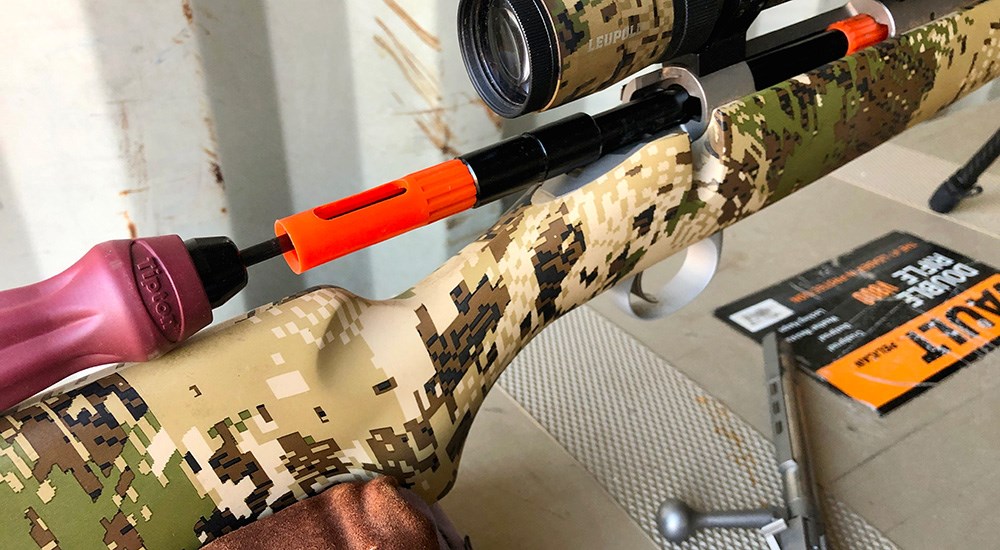
2. Clean the Bore
This is the most important—and lengthy—step of all. Take your time and get the job done right. Before you begin, be sure to remove the bolt and install a bore guide in your action/chamber to protect the rear edges of your chamber and the throat of your bore. For the same reason, use only a high-quality, one-piece coated cleaning rod. Anything else can and will damage your bore. Avoid using jointed (take down) rods—they can actually gouge the inside of your bore. Finally, obtain the appropriate-size brass jag and bronze bore brush for your caliber. If you shoot more than one caliber, you’ll need a jag and brush for each caliber.
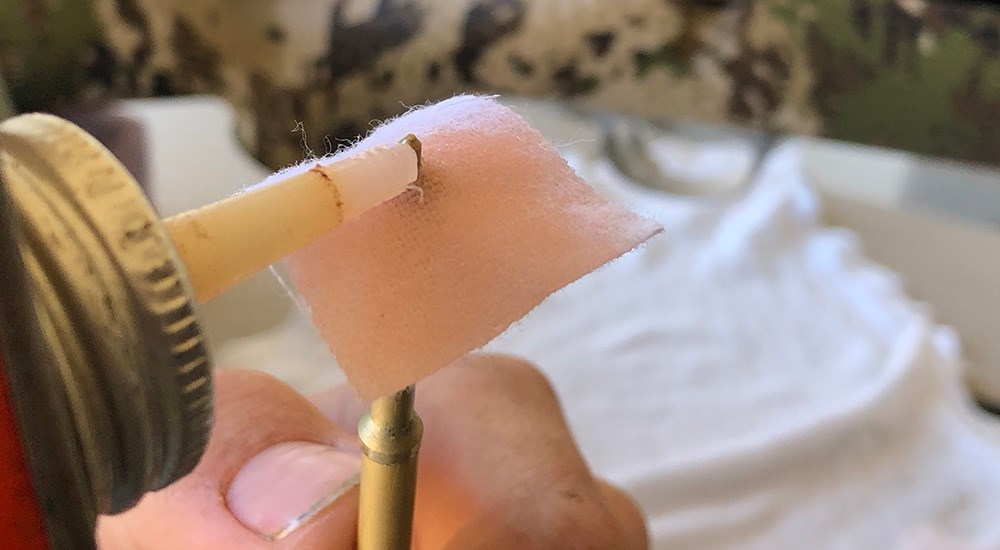
Set your rifle on a table, securely held by a rifle cradle, gun vice or similar. A bipod up front and a “Bunny Ears” shooting bag in the rear work well. Now, slip a cleaning patch onto your jag and wet it with a standard solvent like Hoppe’s No. 9. Run it through your barrel, always working from the breech end through the bore guide. Never run your cleaning rod from the muzzle end—it can cause damage to the crown and compromise accuracy.
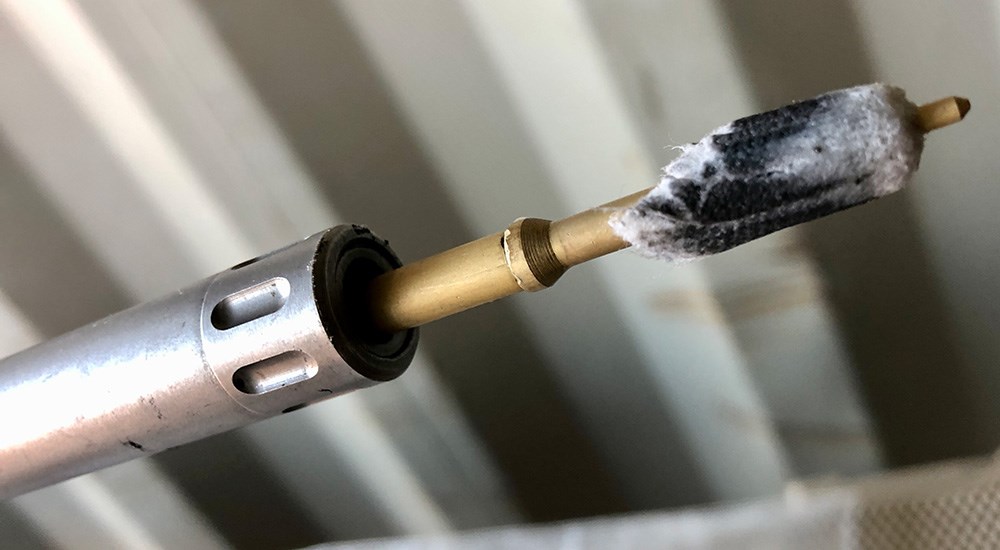
Next, run a dry patch through your bore. It will likely be black with fouling. Repeat this wet/dry patch process several more times. When both patches come out mostly clean it’s time to use your bore brush. Mount the brush on your cleaning rod, add a couple drops of solvent to the bristles, and run it back and forth through your barrel twenty or so times. Again, work from the breech end. Now wipe the residue away by passing several clean dry patches through the bore. (Tip: put a gallon-size Ziploc freezer bag over your muzzle to catch the spray from the brush as well as dirty patches.)
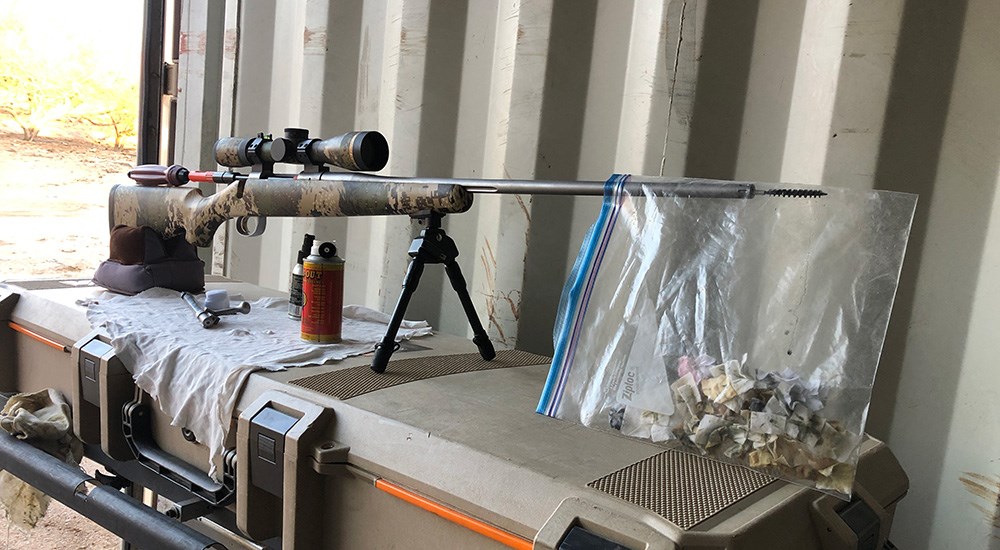
Replace the jag and run another damp cleaning patch through the bore. Wait five minutes and follow with several dry patches. If all these patches come out clean, you’re probably good to move to the next step. If the rifle still shows significant fouling, you can repeat the previous steps as often as necessary.
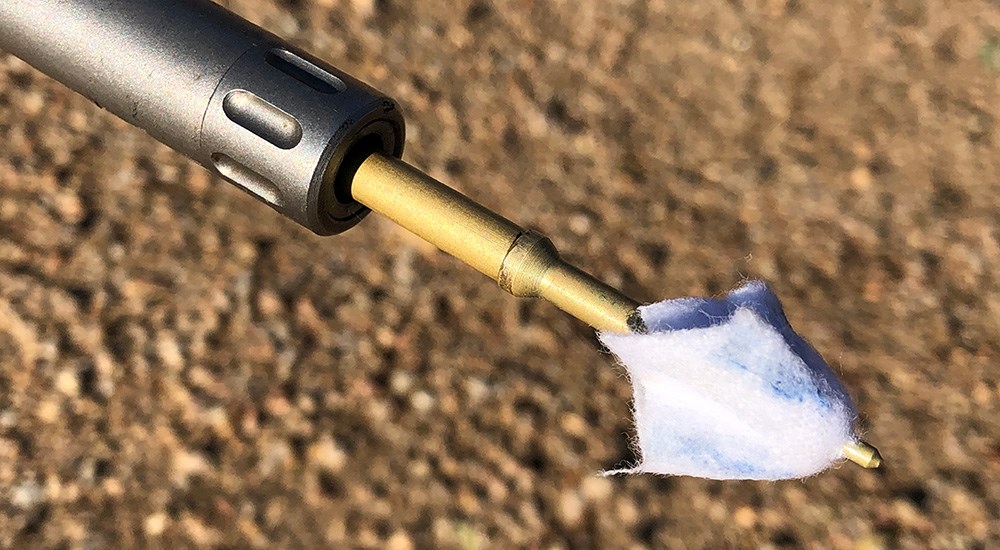
Once the bore is clean it’s time to check for copper. Now, some barrels never build copper fouling, but others accumulate copper until they lose accuracy. Some projectiles tend to deposit copper more readily than others—primarily monometal type bullets. Whatever the case, it’s a good idea to check for and, if necessary, remove copper from your bore. To check for copper fouling simply run a patch dampened with a good copper bore solvent through your barrel. (Avoid solvents containing ammonia, it tends to work a bit too deep in the micro-fractures of the metal.) I like to use a solvent by SharpShoot-R called Wipe-Out. Wait 30 minutes and then run a fresh patch. If the patch comes out mostly clean, you’re good to move on. However, if it comes out bright blue, you’ve got copper fouling. You’ll need to re-apply copper solvent, let it sit 30 minutes (or as directed on the instructions) and wipe clean with more dry patches. Repeat until the patches no longer come out blue.
Now that your rifle bore is clean as a whistle it’s time to lay down a thin film of quality gun oil. Thoroughly dampen a patch with oil and run it through your barrel. If you live in a humid climate, leave the oil in the bore during storage. If you live in a dry, dusty climate, wait five minutes and then run one dry patch through the bore to wipe away excess oil. That’s it! You’re finally ready to move on to the next step.
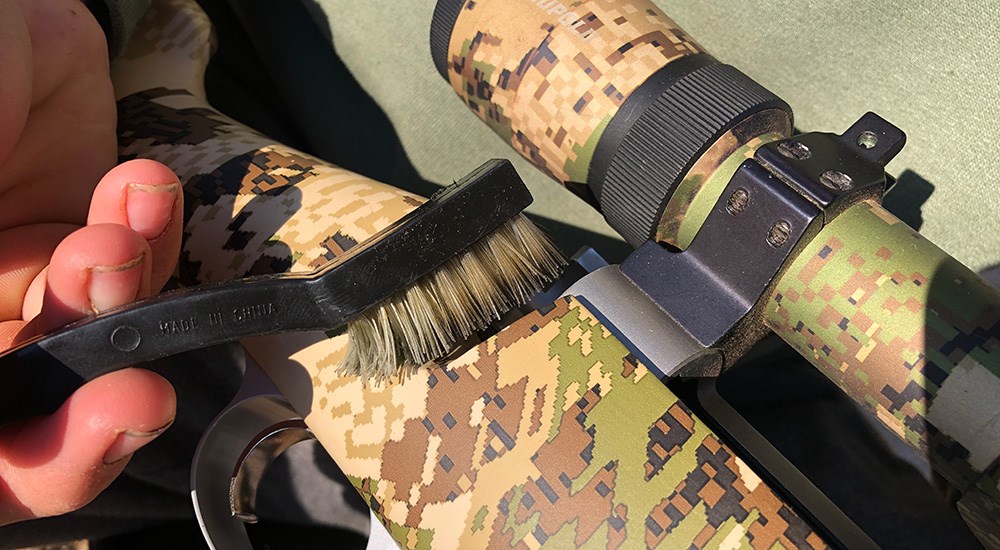
3. Clean the Action and Magazine
Apply a bit of standard solvent to a soft cloth and thoroughly wipe down your rifle’s action and magazine well inside and out. If need be, use an old toothbrush or similar to reach difficult corners and recesses. If your rifle uses a detachable magazine, wipe it down well. Clean the bolt. If the bolt is really dirty or has gotten very wet, you should disassemble it and clean the internal parts as well. Finally, lightly oil the bolt and all inner and outer metal surfaces of the action and magazine well.

4. Clean the Outer Surfaces
It’s time to wrap up. Using a clean, dry cloth, wipe down the entire outside of your rifle. Use a bit of solvent on metal parts if need be, and then oil them lightly. If the rifle has an oil-finished wood stock, you can touch up dry spots with a 50/50 mix of linseed oil and turpentine (avoid getting that on the metal). If it has a composite stock or a varnished wood stock, the only care it will need is to be wiped clean.
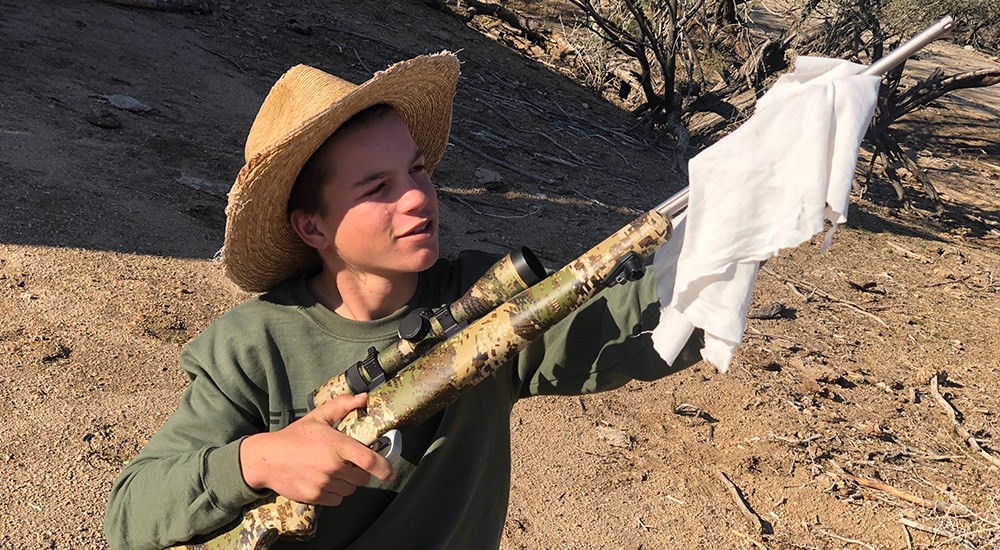
5. Store Correctly
Place your rifle in a clean, dust-and-moisture-free environment for long-term storage. If you live in a humid climate, consider storing it with the muzzle down or horizontal, thus preventing oil from migrating from the bore into the action where it can gum things up. If there’s a lot of dust in your neck of the woods, you might store it in a gun sock to keep it clean. Whatever your circumstances, it is well worth the effort to keep your rifle clean, accurate and reliable. That way it’ll be ready when the air turns crisp, the leaves turn red and gold, and hunting season is upon us once more.





































